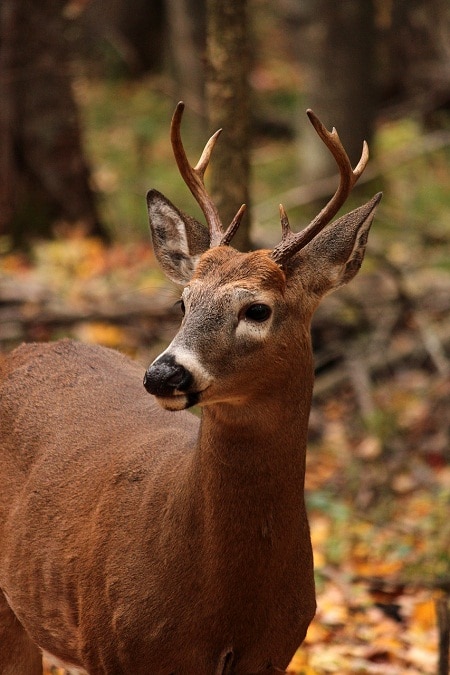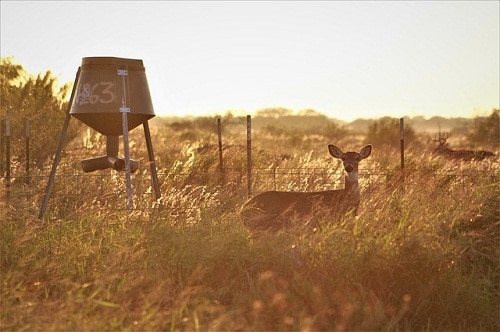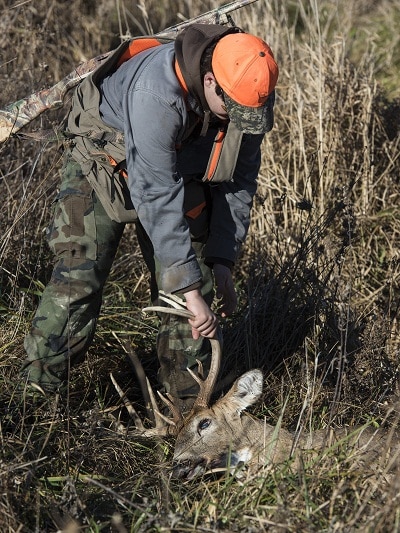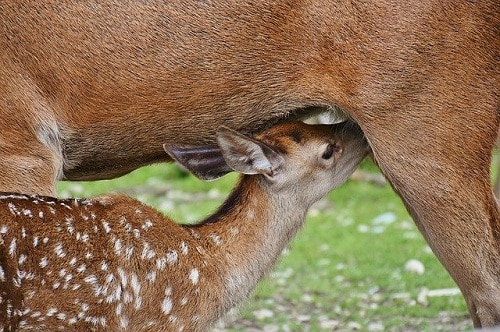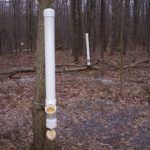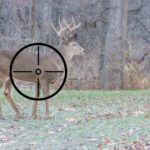Ask four deer hunters how old they consider a mature buck to be, and you’ll get four different answers. What’s interesting is that each could be correct, based on several factors that affect how long it takes a specific whitetail to reach shooter age and size.
In the wild, most experts agree that the average lifespan of a white-tailed deer is 4.5 years, about a fourth as long as a well-fed captive deer can be expected to live.
The majority of captive deer are fed abundant amounts of high-quality feed, predation is usually minimal or absent, and some of the whitetails are even administered medicines and vaccines — all health factors not afforded to whitetail in the wild.
According to studies shared by the University of Wisconsin–Stevens Point, the average life expectancy of a free-range deer is 2.9 years, while the average lifespan of a wild doe is 6.5 years.
Factors of Whitetail Longevity
Some of the factors that influence how long a wild whitetail remains on the hoof include the following.
Location
A biologist with the Kansas Department of Wildlife Parks and Tourism found the oldest documented wild bucks he could locate were found in Texas and Georgia. Areas with strict, quality deer management and mild weather conditions, as are prevalent in those two states, allow wild deer to grow older.
For example, a sample of teeth collected from some 10,000 deer harvested on the King Ranch in Texas showed that hunters there were killing a lot of bucks that were age ten or older.
On the other hand, according to the Quality Deer Management Association (QDMA), an average of only 37% of 1.5-year-old bucks on public land survive deer season, while 75% of like-age, private-land bucks are still on the landscape at season’s end.
Several location factors determine a herd’s age class. A primary one is hunting pressure. As might be expected, where hunting density is greater, deer on average don’t live as long.
The same goes for regions with harsher weather conditions: whitetails in Michigan’s upper peninsula, where winter temperatures and snowfall can be brutal, do not live nearly as long on average as do deer in south Texas, where weather conditions allow browse to remain easily available year round.
One Wisconsin whitetail study documented starvation as being the cause of death for 17% of the deer herd in a farmland setting, and weather is pointed out to be a critical factor. Drought can cause vegetation to dry up and wither, snow can cover browse, and flooding can drown or submerge feed.
The effect of harsh winter weather on a deer herd is most apparent in early spring. By that period of the season, the whitetails are at their weakest after depleting body reserves while enduring the elements.
Sex
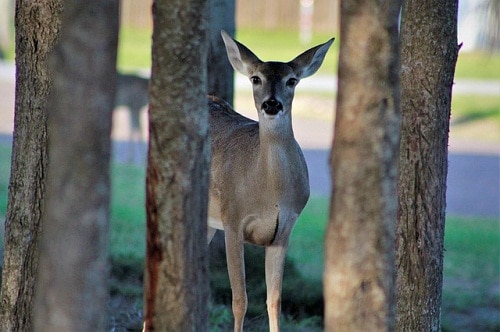
As with most species, female deer typically outlive their male counterparts. In the case of deer, bucks are larger that does and require more food to maintain the health of that bigger body mass.
And as with other big-game species, a male deer’s behavior, especially during the rut, exposes it to more injuries than his female companions are likely to encounter.
As for those does, a recent QDMA report documented wild does that survived into their late teens and captive females that reached 23 and 24 years of age. Those are extremes, but they show the potential for doe longevity.
Predation
The biggest threat to yearling whitetails in the wild is predation by other wild animals. Studies show that exposure, predation, and abandonment claim the majority of fawns in their first three months of life.
Once deer reach 1.5 years of age and older, data show that predation by humans carrying guns and bows is the leading cause of whitetail demise, followed by deer-vehicle accidents, winter kill, and disease.
The State Farm Insurance Company estimates there are approximately 1.5 million deer-vehicle collisions in the United States annually, most of them fatal to the whitetail.
Recent data from QDMA reports that nationally, hunters harvest about the same number of does as bucks. For example, during the 2015/16 season, the buck harvest by hunters was approximately 2.7 million, and the doe harvest was about 2.8 million.
It’s notable, and no surprise to local whitetail hunters, that across their expanding range, coyotes claim a growing number of fawns each year, actually rivaling the hunter harvest in some parts of the south where the canines now thrive.
Studies shared by the U.S. Forest Service Southern Research Station at the Savannah River Site in South Carolina documented some 70% total fawn mortality, with coyotes responsible for approximately 80%.
Age
Most bucks that are killed by hunters in the U.S. are between the ages of 2.5 and 4.5 years old, according to wildlife biologists, while most hunter-harvested does average more than double that age range.
That said, even under the best conditions and circumstances, it’s rare to find examples of wild deer living more than 15 years even in nonhunting areas such as wildlife refuges. After a decade and a half, a whitetail’s body is in decline to the point that the teeth may be worn down to the gum line, hindering its ability to eat.
The oldest wild whitetail documented to be harvested by a hunter was a doe shot in Vermont during the 2018 hunting season. According to a report by the Rutland Herald, tooth analysis indicated the deer was 20.5 years old. What’s interesting is that same season, a Vermont hunter bagged a buck aged at 12 years old.
The oldest accepted captive deer on record was also a doe, raised by Joe Hamilton, the founder of QDMA. The deer lived on the Kerr Wildlife Management Area in Texas and was at least 23 years old, reportedly having a fawn in her final year of life.
Wild Records
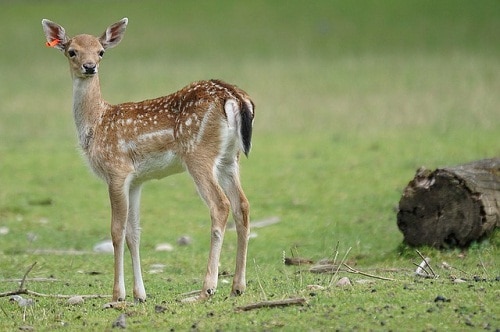
It’s not unheard of for some free-ranging whitetails to reach ages common with pampered captive deer. Accounts of known-age wild deer shared by the QDMA reveal that some free-ranging deer have been known to actually surpass the average age of well-kept whitetails.
In one case, a doe tagged on the Webb Center Wildlife Management Area in Garnett, South Carolina, was killed 14.5 years later in the same field where she had been tagged as a fawn.
Retired Michigan deer researcher John Ozoga has documented known-age wild whitetails from studies in the upper Midwest that include a 15-year-old doe in north-central Minnesota, a 19-year-old doe in northern Minnesota, and a doe in upper Michigan that was 19 years and 10 months of age — as well as a buck from northern Minnesota that lived to the ripe old age of 17 — all thriving in a region known for heavy hunting pressure and harsh winter weather.
The Antler Factor
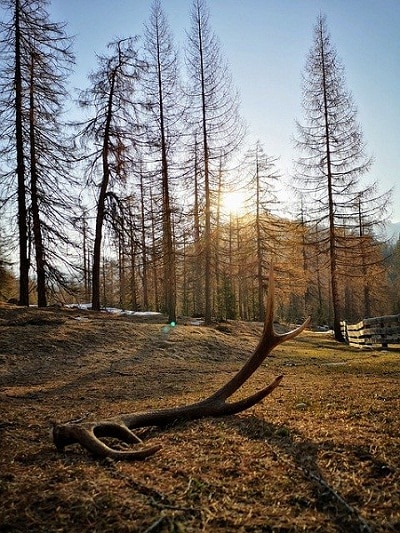
Whitetail bucks shed and regrow antlers every year. As soon as one rack is shed, when hormone levels reach their annual mid-winter low, new antlers start growing again. The act represents the fastest organ regeneration in the animal family, with a potential for several centimeters of growth per day.
An antler is comprised of veins, vessels, arteries, and cartilaginous tissue covered in a thick tissue called velvet during the growth period. Throughout the summer months, the antler begins to calcify and harden, and the velvet dries and is rubbed off by the buck.
Three components determine the size of the buck’s antlers: age, genetics, and nutrition. An average buck will usually maximize his antler size between five and seven years of age, after which the deer and his rack will usually decline slightly in size.
Related: When’s the Best Time to Shed Hunt? (A Regional Guide)

